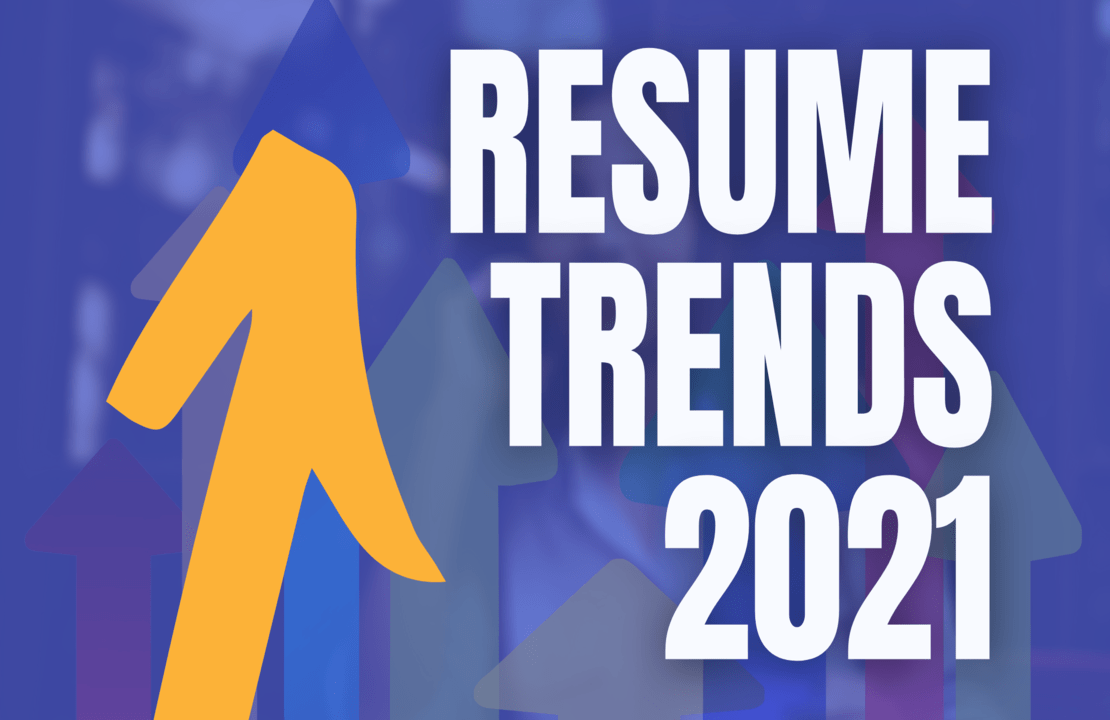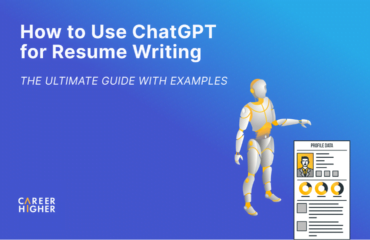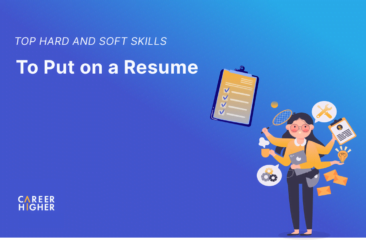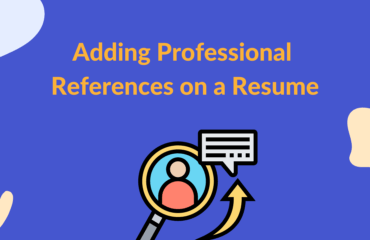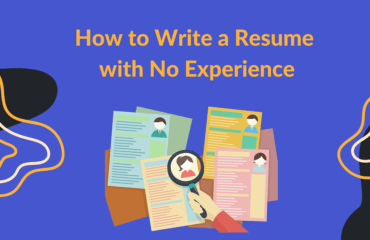Table of Contents
2020 was an unpredictable year for professionals all over the globe. COVID-19 adversely affected the job market, irrespective of location, industry, and role. While we’ve left 2020 behind now, its consequences will be long-lasting. To capture your dream job, it’s more pressing than ever to compete with countless other candidates in a way that sets you apart.
A crucial factor that can help you rise above the crowd is a well-written resume. In this article, we will scrutinize seven burgeoning resume trends to expect in 2021, empowering you to prepare yourself for the job market and gain a competitive advantage.
1) An understanding of ATS screening and keywords
Research confirms that approximately 98% of Fortune 500 companies use applicant tracking systems (ATSs) to screen candidates before interviewing. Employers rely on these software programs to collect, organize, scan, and rank resumes during the hiring process. The key to writing a resume that passes the ATS screening is using the right keywords, format, structure, and file type.
Since keywords play a pivotal role in ATS scanning, job seekers must learn to use the most distinctive keywords in the most value-adding ways. One method is to use resume-optimizing software before submitting your application, such as JobScan, SkillSyncer, or RezRunner.
ATSs are likely here to stay in every industry, so we expect them to become increasingly efficient as time passes. Thus, it’s vital for candidates to comprehend the technicalities of ATS pre-screening and prepare for it.
2) A results-oriented perspective
Top resumes focus on a candidate’s achievements. This point of view distinguishes you in your field by drawing your target employer’s eye to your accomplishments in your previous role, reflecting your impact on the company. Achievements could include examples like “increased sales by 30%” or “boosted productivity and efficiency.” The guidelines listed for SMART goals also apply well to resume achievements.
We expect this trend to continue in 2021, as results-oriented resumes are impactful. A focus on contextualizing your experience enhances the content of your resume. Start by writing a line that describes your company, followed by a broad but brief explanation of your responsibilities that highlights the target results. Supplement with bullets explaining your role in depth according to the STAR method. This will help you outline the situation, tasks, and actions that led to your excellent results.
3) A focus on high-demand soft skills
While acquiring job-related hard skills is always a win, business is all about cultivating and maintaining relationships. Employers now prefer candidates with command of soft skills such as empathy, communication, adaptability, problem-solving, and decision-making. Internal research by Google ascertained that the highest-performing teams consisted of members who possessed strong soft skills, not professionals with strong technical skills.
Employers will prioritize soft skills in the coming years as well; consequently, your resume must reflect them to beat the competition. Provide an abundance of examples highlighting these skills, such as excellent communication skills or outstanding decision-making skills that helped your organization gain great business opportunities. Incorporate statistics and metrics as mentioned above. Employers will appreciate a complete picture of your actions and results, which can influence decision-makers to decide in your favor.
For example: “Drove a consistently high-performing team and developed a collaborative environment with a focus on employee development; enhanced employee retention rate by 12%.”
The reason behind the increased focus on soft skills is that hard skills tend to become obsolete progressively faster as technology advances. Many employers can easily invest in upgrading employees’ hard skills, depending on the needs of the industry. On the other hand, they struggle to identify candidates with high-quality soft skills. Every company needs high-performing decision-makers, flexible team players, and persuasive communicators.
4) An effective professional summary
The professional summary section is positioned at the top of your resume. As the name suggests, its purpose is to briefly summarize your professional history. Since recruiters have only a few seconds to glance over your resume, you must intrigue them within those fleeting moments.
What makes a professional summary intriguing? Employers are scanning for value propositions, so communicate the value you can add in those five to seven lines. You’ll help decision-makers not only understand your match with the company but also spend a few additional seconds on your resume.
The value you can bring resides in your achievements, skills, and expertise, especially in the factors that make you a unique candidate. Customize every resume you send out by tailoring its content to harmonize with the employer’s needs. It may be unnecessary to revise your professional experience section extensively, but your summary is an optimal section to highlight your value based on your target employer.
5) An emphasis on skills enhancement during the pandemic
2021 is the first year to witness the direct consequences of COVID-19. Most applicants are professionals who worked during the pandemic. The only way to determine the best fit for an open vacancy is to inspect the candidate’s previous performance and adaptation to the new requirements.
Employers will be eager to learn how you managed a remote team or worked as part of one. They will want to analyze the action plan you adopted to maintain customer service while working from home in a different part of the world. To be precise, the steps you took to overcome barriers during a pandemic will weigh heavily in the minds of decision-makers.
While describing your professional experience in your resume, emphasize the skills you gained during remote work. Include examples of challenges faced due to lack of personal meetings and ways you managed your own well-being during the pandemic, among others.
6) Management of employment gaps
Professionals in every industry, at all job levels, and in organizations of various sizes were forced to leave their jobs during the pandemic. Myriads of candidates applying for jobs in 2021 will be professionals who fall into this category. While employers are willing to consider them, the justification of employment gaps will be consequential.
If you were unemployed for a time, employers would want to know how you remained productive. Perhaps you held a temporary position, such as contractual or freelance work. You may have enhanced your skills by enrolling in educational programs, professional certification programs or workshops. Employers want to quantify your commitment to professional development and continuous learning. To ensure your resume stands out, find ways to continue your professional development while you’re between jobs, and remember to list those activities on your resume.
7) Infographics
Infographic resumes are a more recent development than the previously listed resume features. An infographic resume uses icons, charts, and graphic designs to convey a candidate’s information in a striking visual format. Be aware that we advise against infographics in online applications because they fail to pass ATS screenings. The ATS is likely to reject your infographic resume due to lack of keywords, excessive design, columns, and unusual fonts. However, these can come in handy when attending networking events and career fairs or sending resumes directly to employers.
Although the job market continues to recover from the severe impact of COVID-19, job seekers will see a plethora of employment opportunities in 2021. Pinpointing the ideal new role may sound exhausting, but taking wise steps will strengthen your candidacy for a coveted position. Above all, remember to differentiate your resume by capitalizing on job search optimization techniques and seeking professional consulting when required.
